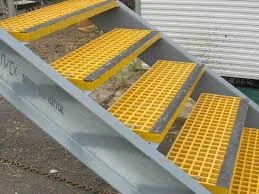
-
 Afrikaans
Afrikaans -
 Albanian
Albanian -
 Amharic
Amharic -
 Arabic
Arabic -
 Armenian
Armenian -
 Azerbaijani
Azerbaijani -
 Basque
Basque -
 Belarusian
Belarusian -
 Bengali
Bengali -
 Bosnian
Bosnian -
 Bulgarian
Bulgarian -
 Catalan
Catalan -
 Cebuano
Cebuano -
 China
China -
 China (Taiwan)
China (Taiwan) -
 Corsican
Corsican -
 Croatian
Croatian -
 Czech
Czech -
 Danish
Danish -
 Dutch
Dutch -
 English
English -
 Esperanto
Esperanto -
 Estonian
Estonian -
 Finnish
Finnish -
 French
French -
 Frisian
Frisian -
 Galician
Galician -
 Georgian
Georgian -
 German
German -
 Greek
Greek -
 Gujarati
Gujarati -
 Haitian Creole
Haitian Creole -
 hausa
hausa -
 hawaiian
hawaiian -
 Hebrew
Hebrew -
 Hindi
Hindi -
 Miao
Miao -
 Hungarian
Hungarian -
 Icelandic
Icelandic -
 igbo
igbo -
 Indonesian
Indonesian -
 irish
irish -
 Italian
Italian -
 Japanese
Japanese -
 Javanese
Javanese -
 Kannada
Kannada -
 kazakh
kazakh -
 Khmer
Khmer -
 Rwandese
Rwandese -
 Korean
Korean -
 Kurdish
Kurdish -
 Kyrgyz
Kyrgyz -
 Lao
Lao -
 Latin
Latin -
 Latvian
Latvian -
 Lithuanian
Lithuanian -
 Luxembourgish
Luxembourgish -
 Macedonian
Macedonian -
 Malgashi
Malgashi -
 Malay
Malay -
 Malayalam
Malayalam -
 Maltese
Maltese -
 Maori
Maori -
 Marathi
Marathi -
 Mongolian
Mongolian -
 Myanmar
Myanmar -
 Nepali
Nepali -
 Norwegian
Norwegian -
 Norwegian
Norwegian -
 Occitan
Occitan -
 Pashto
Pashto -
 Persian
Persian -
 Polish
Polish -
 Portuguese
Portuguese -
 Punjabi
Punjabi -
 Romanian
Romanian -
 Russian
Russian -
 Samoan
Samoan -
 Scottish Gaelic
Scottish Gaelic -
 Serbian
Serbian -
 Sesotho
Sesotho -
 Shona
Shona -
 Sindhi
Sindhi -
 Sinhala
Sinhala -
 Slovak
Slovak -
 Slovenian
Slovenian -
 Somali
Somali -
 Spanish
Spanish -
 Sundanese
Sundanese -
 Swahili
Swahili -
 Swedish
Swedish -
 Tagalog
Tagalog -
 Tajik
Tajik -
 Tamil
Tamil -
 Tatar
Tatar -
 Telugu
Telugu -
 Thai
Thai -
 Turkish
Turkish -
 Turkmen
Turkmen -
 Ukrainian
Ukrainian -
 Urdu
Urdu -
 Uighur
Uighur -
 Uzbek
Uzbek -
 Vietnamese
Vietnamese -
 Welsh
Welsh -
 Bantu
Bantu -
 Yiddish
Yiddish -
 Yoruba
Yoruba -
 Zulu
Zulu
chemical products for frp applications a comprehensive guide ...
Chemical Products for FRP Applications A Comprehensive Guide
Fiber-Reinforced Plastic (FRP) is increasingly becoming a popular choice across various industries due to its superior strength-to-weight ratio, corrosion resistance, and versatility. The composite material—comprising a polymer matrix reinforced with fibers—offers an innovative solution in sectors like aerospace, automotive, construction, and marine applications. However, the performance of FRP largely depends on the chemical products used in its production and repair. This article provides an overview of significant chemical products suitable for FRP applications.
Resins
The core component of FRP composites is the resin, which binds the fibers together and provides structural integrity. Epoxy, polyester, and vinyl ester are the most commonly used resins in FRP manufacturing.
1. Epoxy Resins These resins are known for their excellent adhesion, mechanical properties, and chemical resistance. They are ideal for applications requiring high strength and durability, such as aerospace and automotive components.
2. Polyester Resins Cost-effective and easy to work with, polyester resins are widely used in marine applications and the construction sector. While not as strong as epoxy resins, they cure quickly and are suitable for applications where budget constraints are a significant concern.
3. Vinyl Ester Resins Combining the best features of epoxy and polyester, vinyl ester resins offer superior corrosion resistance and mechanical strength. This makes them suitable for harsh environments, such as chemical processing plants and wastewater treatment facilities.
Reinforcement Materials
In addition to resins, the type of reinforcement material impacts the strength and functionality of the FRP composite. Commonly used reinforcement materials include glass fibers, carbon fibers, and aramid fibers.
1. Glass Fibers The most widely used reinforcement, glass fibers enhance the strength and stiffness of FRP. They are also cost-effective, making them ideal for various applications, including pipelines, tanks, and automotive parts.
2. Carbon Fibers Known for their exceptional strength and lightweight properties, carbon fibers are used in high-performance applications such as aerospace and automotive racing. However, they come with a higher price tag compared to glass fibers.
3. Aramid Fibers This type of fiber offers high toughness and impact resistance, making it suitable for protective applications, such as ballistic protection and sports equipment.
chemical products for frp applications a comprehensive guide ...

Additives
To enhance the performance of FRP composites, various additives are incorporated into the resin formulation. These additives serve multiple functions, from improving weatherability to increasing fire resistance.
1. Fillers Fillers such as calcium carbonate or silica are frequently added to resins to improve processability and reduce costs. However, the choice of filler can also influence the mechanical properties of the final product.
2. Thixotropes These additives modify the viscosity of the resin, enabling better control during the application process. They are particularly useful in vertical applications where sagging or dripping may occur.
3. Flame Retardants In industries where fire safety is a concern, flame retardants are crucial. They reduce flammability and improve the safety of FRP components, particularly in construction and transportation.
4. UV Stabilizers To prevent degradation due to ultraviolet (UV) exposure, UV stabilizers are added to resin formulations. This is especially important for outdoor applications where sunlight exposure is inevitable.
Applications
The versatility of FRP makes it suitable for a wide array of applications
- Aerospace Lightweight components that reduce fuel consumption and increase efficiency. - Automotive High-strength parts that improve the performance and safety of vehicles. - Construction durable, weather-resistant structures like bridges and building facades. - Marine Corrosion-resistant hulls, decks, and other components that stand up to harsh environments.
Conclusion
The chemical products used in FRP applications play a vital role in determining the performance, strength, and durability of the final composite. By carefully selecting resins, reinforcement materials, and additives, industries can leverage the benefits of FRP to create innovative solutions tailored to their specific needs. As technology continues to evolve, the range of chemical products available for FRP applications will likely expand, further enhancing their performance and applicability in diverse fields.









